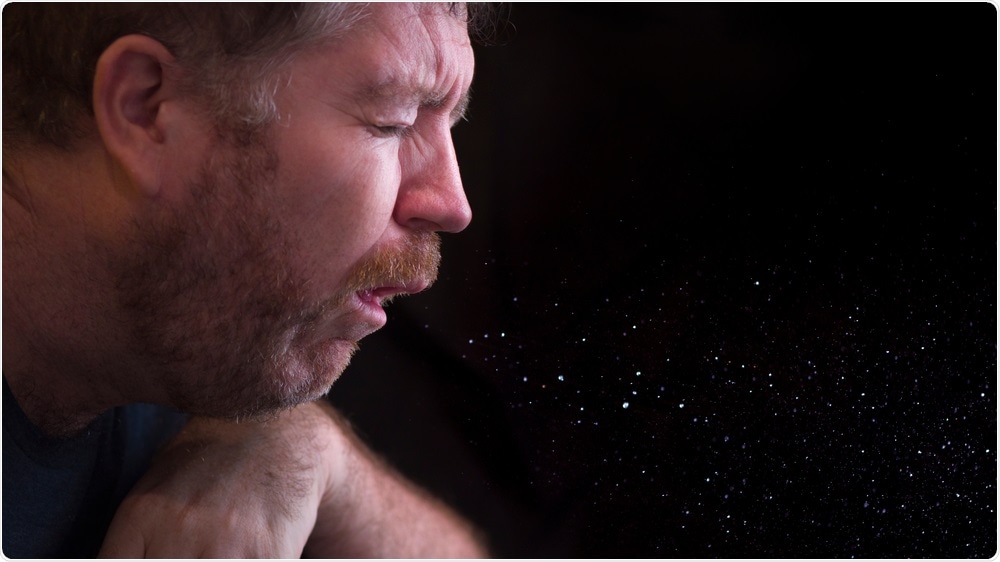Wearing face masks is widely recommended as the coronavirus disease (COVID-19) continues to ravage across the globe. The pandemic has now topped more than 16.66 million cases, with a staggering death toll of at least 659,000.
With face masks now mandatory in the United Kingdom and other countries in Asia, people have been making their masks, especially as surgical mask supplies in shortage. However, health experts say some masks are more effective than others in stopping the spread of the severe acute respiratory syndrome coronavirus 2 (SARS-CoV-2), the virus that causes COVID-19 disease.
Now, a team of Australian researchers has recorded videos of what happens when people talk, sneeze, or cough in various scenarios, while not wearing a mask, wearing two different cloth masks, or using a surgical mask. The researchers aimed to evaluate the effectiveness of the U.S. Centers for Disease Control and Prevention (CDC) recommended one-and two-layer cloth face-covering against the three-ply surgical masks used in healthcare settings. The research is published in the BMJ journal Thorax.

Researchers used an LED lighting system with a high-speed camera to capture the spread of germs from coughing and sneezing. Image Credit: Christian Vinces / Shutterstock
Shielding droplets and aerosols
To arrive at their findings, the researchers visualized the droplets and aerosols by an LED lighting system with a high-speed camera. They compared scenarios where people used no mask, two different home-made cloth masks, and a three-layered surgical mask.
The team has found that a surgical mask was the most effective at blocking aerosols and droplets from people who were sneezing, coughing, or talking. However, since supplies are scarce due to the high demand for surgical masks, a cloth mask is the next best thing, and they found that the more layers of cloth, the better.
High speed camera captures how different types of face masks work
The team confirmed that even people who talk produces respiratory droplets that can be suspended in the air. Coughing and sneezing produce even more droplets, making them more infectious.
Further, the team found that a single-layer cloth face covering can reduce the droplet spread by coughing, sneezing, and talking, but was not as good as the two-layered cloth mask or the three-layered surgical mask. They also explained that with more layers, the protection the mask provides is better. A 12-layered cloth mask is about as protective as a surgical mask, reducing the infection risk by as much as 67 percent.
What can be done?
The team recognizes that sewing 12 layers of fabric together is hard. They suggest increasing the number of layers of at least three layers, use a water-resistant fabric for the outer layer, and choose a fabric with a high-thread-count. The tighter the weave, the better it can be used as a cloth mask.
The ideal cloth is hybrid fabrics such as cotton-silk, cotton-flannel, or cotton-chiffon since these fabrics provide better filtration and are comfortable to use. Lastly, make sure the masks fit perfectly and seal around the face. Cloth masks should always be washed daily after washing them.
Most popular masks
A new normal exists in most countries, with wearing of masks and physical distancing implemented to prevent the spread of the coronavirus. Many people have added face masks to their line of fashion necessities. Now, online merchants have shifted their products from bags and clothes to sewn cloth masks.
The most popular masks include those sold on websites such as Etsy, a website selling crafts and handsewn materials by various sellers, Vida, an apparel and accessories company, Custom Ink, Vistaprint, Arm the Animals, Jane, Radian Jeans, and Disney, among others.
How to test masks
A senior lecturer in evidence-based healthcare at the University of Portsmouth, Simon Kolstoe, has recommended a simple way to test if a face mask or face covering is effective.
ABC 6 takes on Bill Nye's mask vs. candle experiment
To test if the mask is effective, he recommended putting on the mask and trying to blow out a candle. Those who can turn off the flame or move it are essentially wearing ineffective face coverings.
“The design of face-covering that made it hardest to divert the candle flame will probably provide the best barrier for projecting the virus forward and through the face-covering,” Kolstoe explained.
More than ever, wearing of masks is very important not only when going out of the house, but also when entering spaces with poor ventilation. The spread of the virus continues to ravage across the globe, with the case toll now reaching more than 16.54 million and the death toll topping 655,000.
Sources:
Journal reference: